ANS 105 Exam 2
0.0(0)
0.0(0)
Card Sorting
1/105
Earn XP
Description and Tags
Study Analytics
Name | Mastery | Learn | Test | Matching | Spaced |
|---|
No study sessions yet.
106 Terms
1
New cards
how many breeds are recognized by CFA ( Cat Fanciers Association)
45 but only 42 are in a class to show
2
New cards
when was 1st cat show?
1871
3
New cards
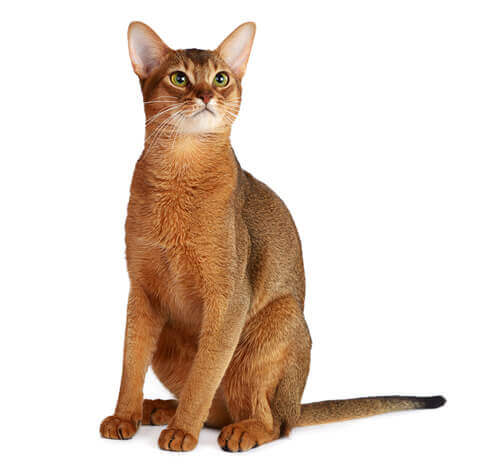
Abyssinian cat breed
\-oldest cat breed
\-original ancestor is africa wildcat which it retains look of
\-busy and athletic
\-not actually from Abyssinian (Ethiopian origin) …Asia more likely
\-not lap cat but likes other cats of same breed and humans
\-original ancestor is africa wildcat which it retains look of
\-busy and athletic
\-not actually from Abyssinian (Ethiopian origin) …Asia more likely
\-not lap cat but likes other cats of same breed and humans
4
New cards
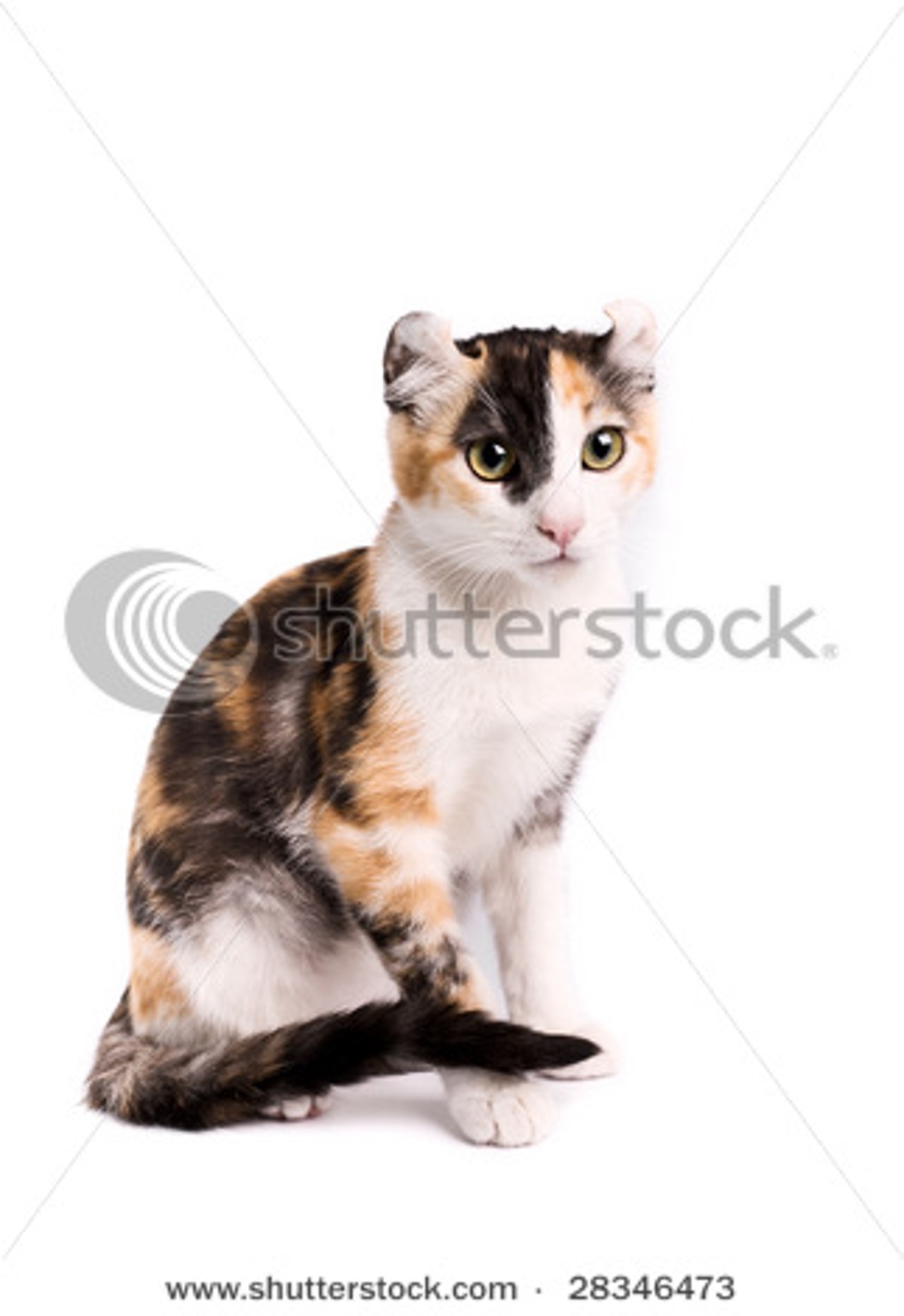
American Curl cat breed
\-developed in 1980s
\-very people-oriented, faithful, affectionate
\-good at adjusting to pets, children, new situations
\-ppl say thy are very dog like
\-born with ears straight but start to curl back 3 to 5 days (no known genetic issues with ears)
\-curious, intelligent
\-have little trill-like cooing sounds
\-minimal undercoat sheds little, does not need much grooming
\-very people-oriented, faithful, affectionate
\-good at adjusting to pets, children, new situations
\-ppl say thy are very dog like
\-born with ears straight but start to curl back 3 to 5 days (no known genetic issues with ears)
\-curious, intelligent
\-have little trill-like cooing sounds
\-minimal undercoat sheds little, does not need much grooming
5
New cards
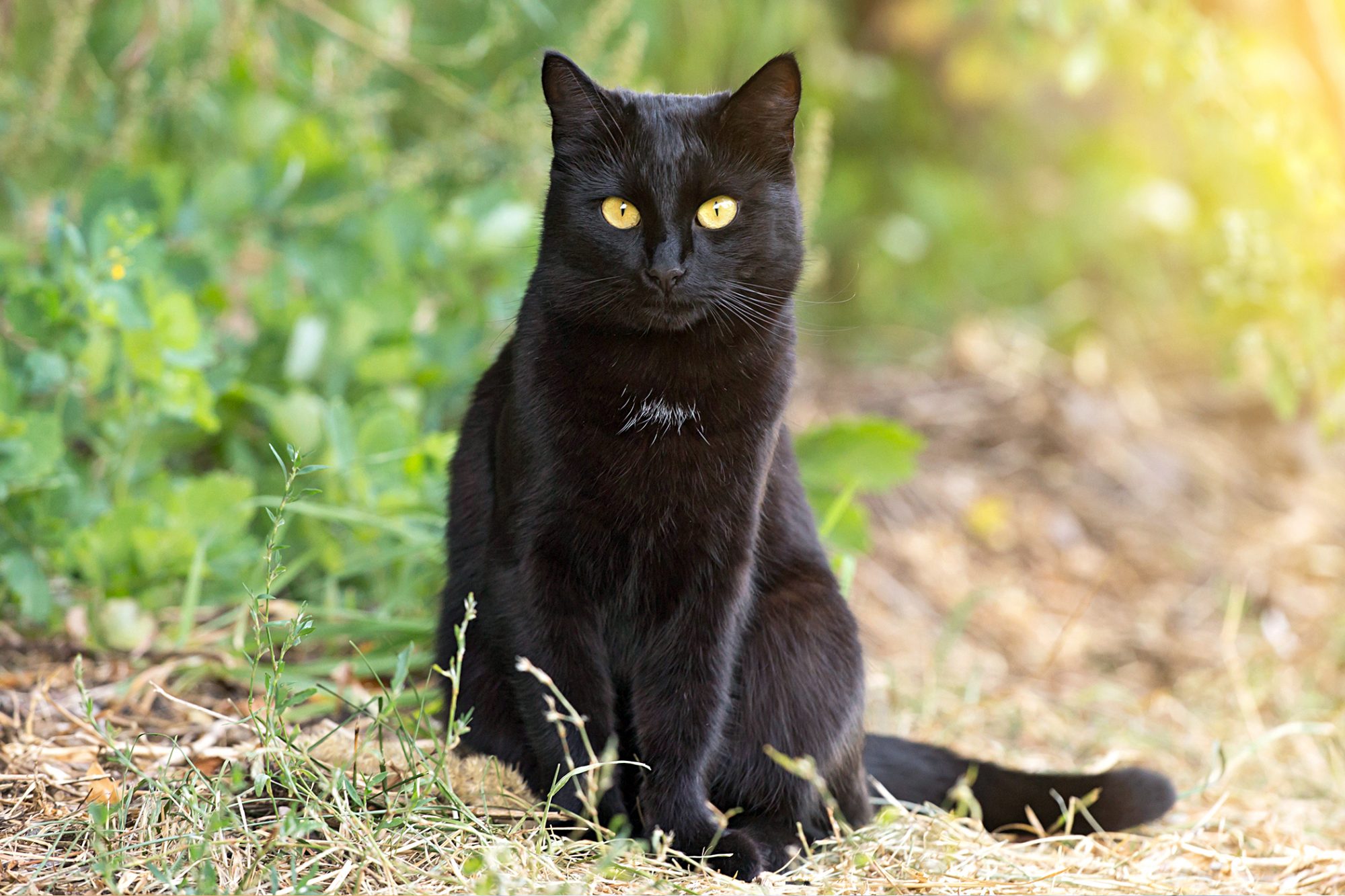
Bombay (American version)
\-named inspired by black leopard of India
\-Burmese cat breed origin and could share health issue of fetal skull development
\-CFA championship status in 1976, 18 years after created in US
\-it is said if you want a dog, cat , or monkey get a bombay
\-can be leash trained, taught to fetch, playful can entertain themselves and owner
\-agreeable, outgoing, intelligent, affectionate pet
\-do well with well behaved children and don’t hide from guest in home, typically get along with dogs and other pets
\
\
\-Burmese cat breed origin and could share health issue of fetal skull development
\-CFA championship status in 1976, 18 years after created in US
\-it is said if you want a dog, cat , or monkey get a bombay
\-can be leash trained, taught to fetch, playful can entertain themselves and owner
\-agreeable, outgoing, intelligent, affectionate pet
\-do well with well behaved children and don’t hide from guest in home, typically get along with dogs and other pets
\
\
6
New cards
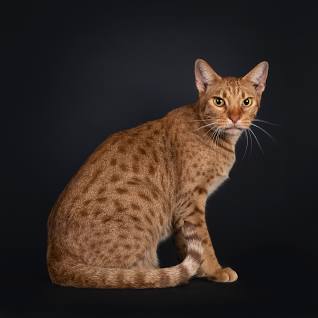
Ocicat
\-first cat breed selectively bred to resemble wild cat (ocelot) but does NOT have wild blood
\-originated from interbreeding of Abyssinian, Siamese, and American shorthair
\-large , active, muscular, and very people oriented
\-gets along w other pets
\-should not be left along too long, but adapts well to traveling
\-come in variety of colors
\-originated from interbreeding of Abyssinian, Siamese, and American shorthair
\-large , active, muscular, and very people oriented
\-gets along w other pets
\-should not be left along too long, but adapts well to traveling
\-come in variety of colors
7
New cards
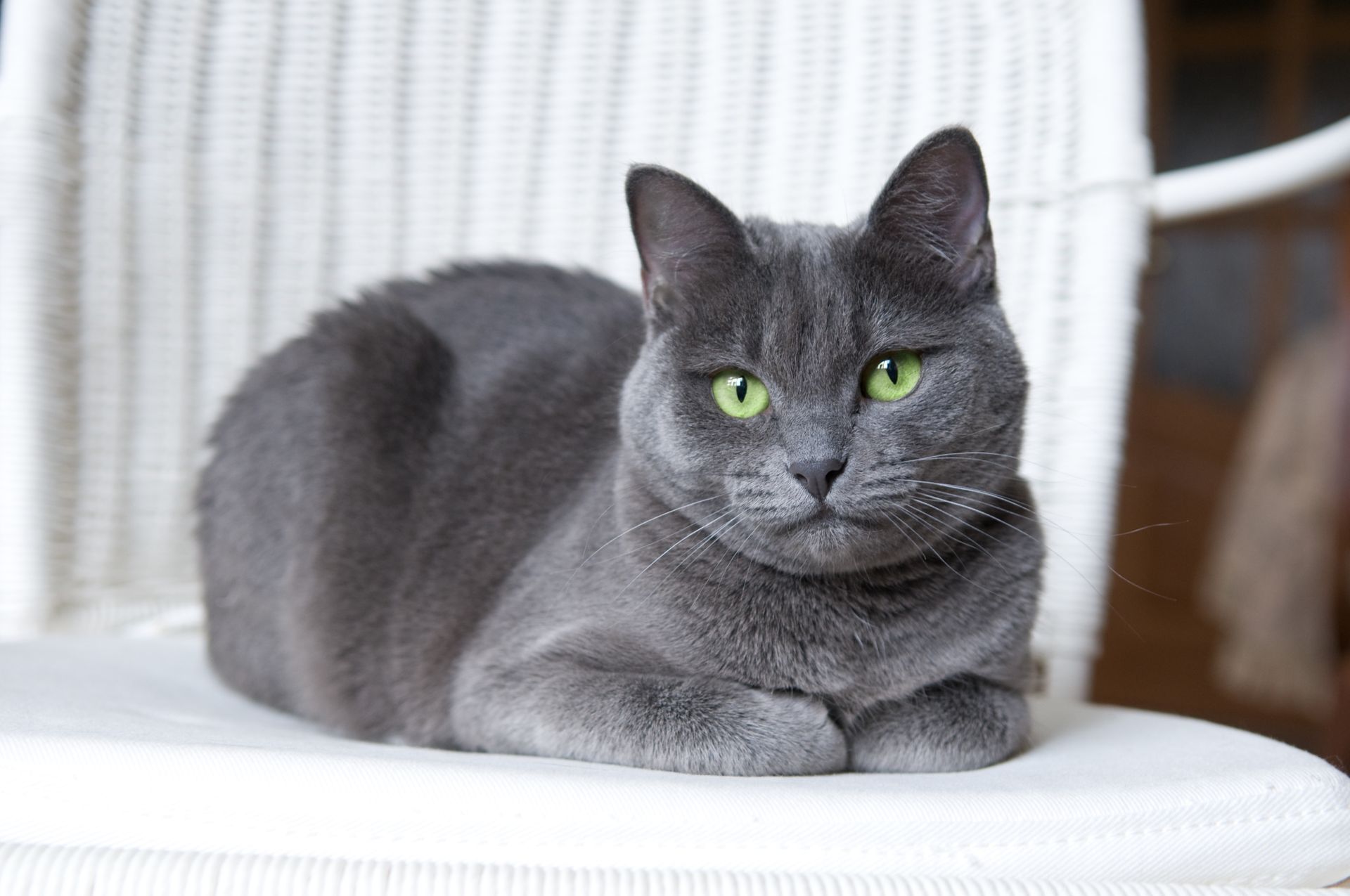
Russian Blue
\-originally known as “archangel cat” or foreign blue
\-origin “iffy” (russian princess to US? , or sailors from archangel isles to England and Europe in 1860s)
\-large, rounded , wide-set eyes that are GREEN (can only be shown with green eyes otherwise considered defect)
* come in 1 color ( blue aka pretty gray color) and short length coat (plush double-coat compared to beavers/seals )
* are clean quiet cats that are playful and loving ; despite shy nature they are devoted n affectionate
* very smart ;reported to open doors and fetch
\-origin “iffy” (russian princess to US? , or sailors from archangel isles to England and Europe in 1860s)
\-large, rounded , wide-set eyes that are GREEN (can only be shown with green eyes otherwise considered defect)
* come in 1 color ( blue aka pretty gray color) and short length coat (plush double-coat compared to beavers/seals )
* are clean quiet cats that are playful and loving ; despite shy nature they are devoted n affectionate
* very smart ;reported to open doors and fetch
8
New cards

Ragdoll
\-large (up to 20 lb)
\-very loving (maybe too much) , laidback
\-purrs are soft, BLUE eyes
\-shed lil altho semi long fur
\-developed in 1960 in Cali (have classic Siamese markings, pointed breed)
\-not a jumper
\-adults by age 4
\-6 colors, patterns, 3 point varieties al available for show
\-very loving (maybe too much) , laidback
\-purrs are soft, BLUE eyes
\-shed lil altho semi long fur
\-developed in 1960 in Cali (have classic Siamese markings, pointed breed)
\-not a jumper
\-adults by age 4
\-6 colors, patterns, 3 point varieties al available for show
9
New cards
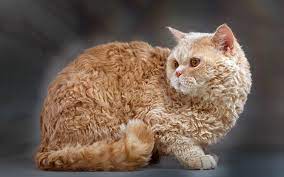
Selkirk Rex
* one of newest breeds (1987)
* originated in Montana by breeding Rex housecat to black Persian
* curly fur is dominant gene mutation
* large “heavy boned” cat
* plush, loose curls ; coat can be short or long
* can be distinguished by curly whiskers since hair can take longer to get curly
* teddy bear cat
* originated in Montana by breeding Rex housecat to black Persian
* curly fur is dominant gene mutation
* large “heavy boned” cat
* plush, loose curls ; coat can be short or long
* can be distinguished by curly whiskers since hair can take longer to get curly
* teddy bear cat
10
New cards

Siamese
\-blue eyes and born all white
\-first exported from Thailand (Siam) (1350) royal cat
\-originally much “fatter” cat
\-very active (demand attention and considered loudest of domestic cats)
\-tail kinks (affects hunting) , crossed eyes (genetic disorder?), green eyes these happen from inbreeding
\-ancestor for other cat breeds
\-first exported from Thailand (Siam) (1350) royal cat
\-originally much “fatter” cat
\-very active (demand attention and considered loudest of domestic cats)
\-tail kinks (affects hunting) , crossed eyes (genetic disorder?), green eyes these happen from inbreeding
\-ancestor for other cat breeds
11
New cards
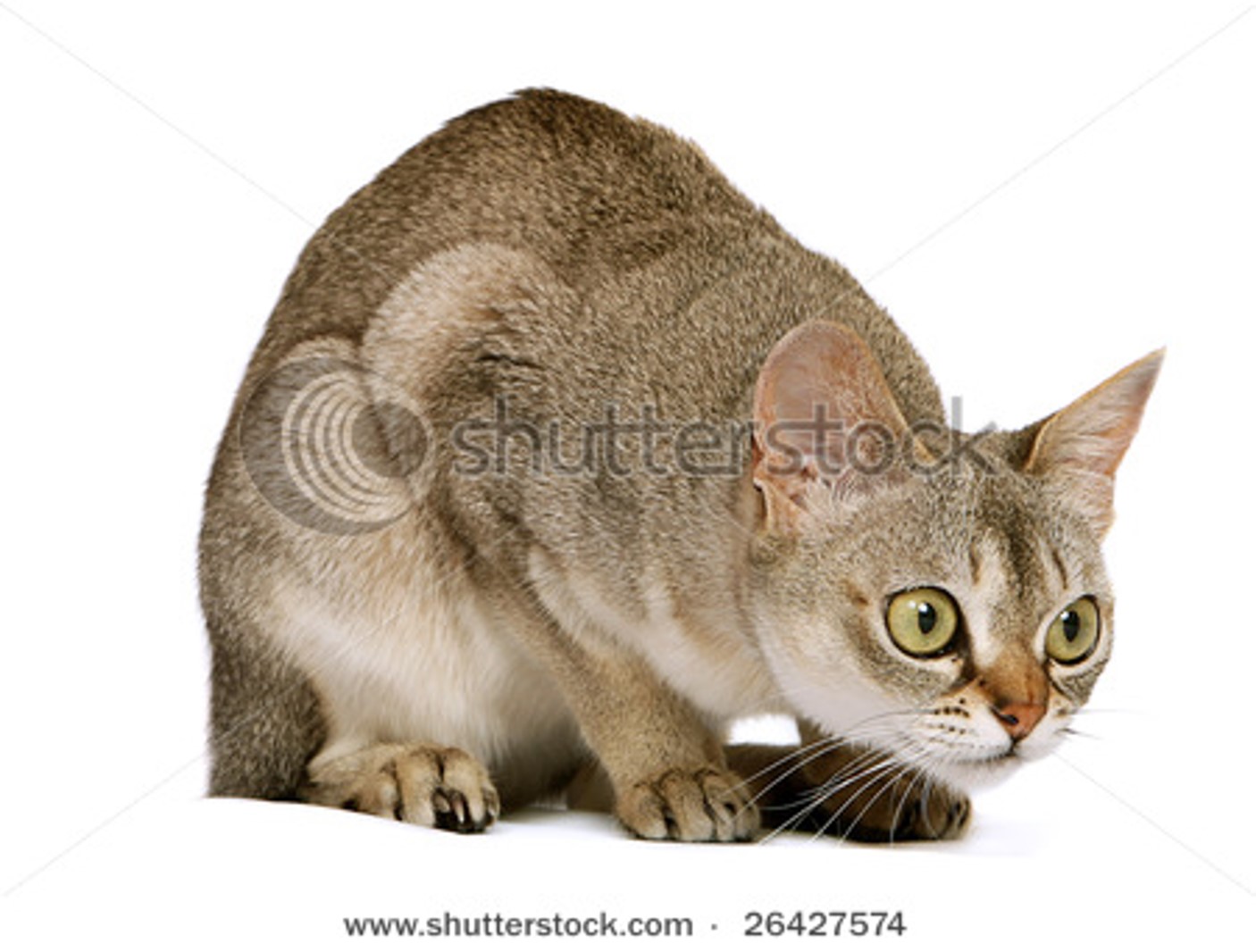
Singapura
\-very small cat (males 6-8 lbs ; females 5-6)
\-slow to devlop won’t reach full size until 15 to 24 months
\-originated in Singapore
\-highly intelligent and interactive w ppl resulting in high curiosity and playfulness
\-smaller than avg shorthaired cat but has large eyes and ears
\-similar to Abyssinian but has unique light beige coat and much smaller
\-slow to devlop won’t reach full size until 15 to 24 months
\-originated in Singapore
\-highly intelligent and interactive w ppl resulting in high curiosity and playfulness
\-smaller than avg shorthaired cat but has large eyes and ears
\-similar to Abyssinian but has unique light beige coat and much smaller
12
New cards

Somali
* said to look like “little red fox” originated from Abyssinian
* very active cat; use feet similarly to hands (can open cabinets turn on faucets); not lap cat
* loves to play w h2o
* very intelligent but quiet
* hair is striped along shaft to give interesting agouti coloration
* comes in 4 recognized colors: red, ruddy, blue and fawn
* very active cat; use feet similarly to hands (can open cabinets turn on faucets); not lap cat
* loves to play w h2o
* very intelligent but quiet
* hair is striped along shaft to give interesting agouti coloration
* comes in 4 recognized colors: red, ruddy, blue and fawn
13
New cards

Sphynx
\-natural mutation breeders in 1960s started to replicate
\-hairless & have “suede” feeling ;still can be allegeric to bc they lick themselves too! and many ppl allegeric to saliva but if only fur it does help w em
\-few genetic problems but senstive to sunlight and temps
\-no hair to soak up natural oils, the sweat, & wiping w cloth better than bathing
\-good for apartment bc of easy going personality
\
\
\-hairless & have “suede” feeling ;still can be allegeric to bc they lick themselves too! and many ppl allegeric to saliva but if only fur it does help w em
\-few genetic problems but senstive to sunlight and temps
\-no hair to soak up natural oils, the sweat, & wiping w cloth better than bathing
\-good for apartment bc of easy going personality
\
\
14
New cards
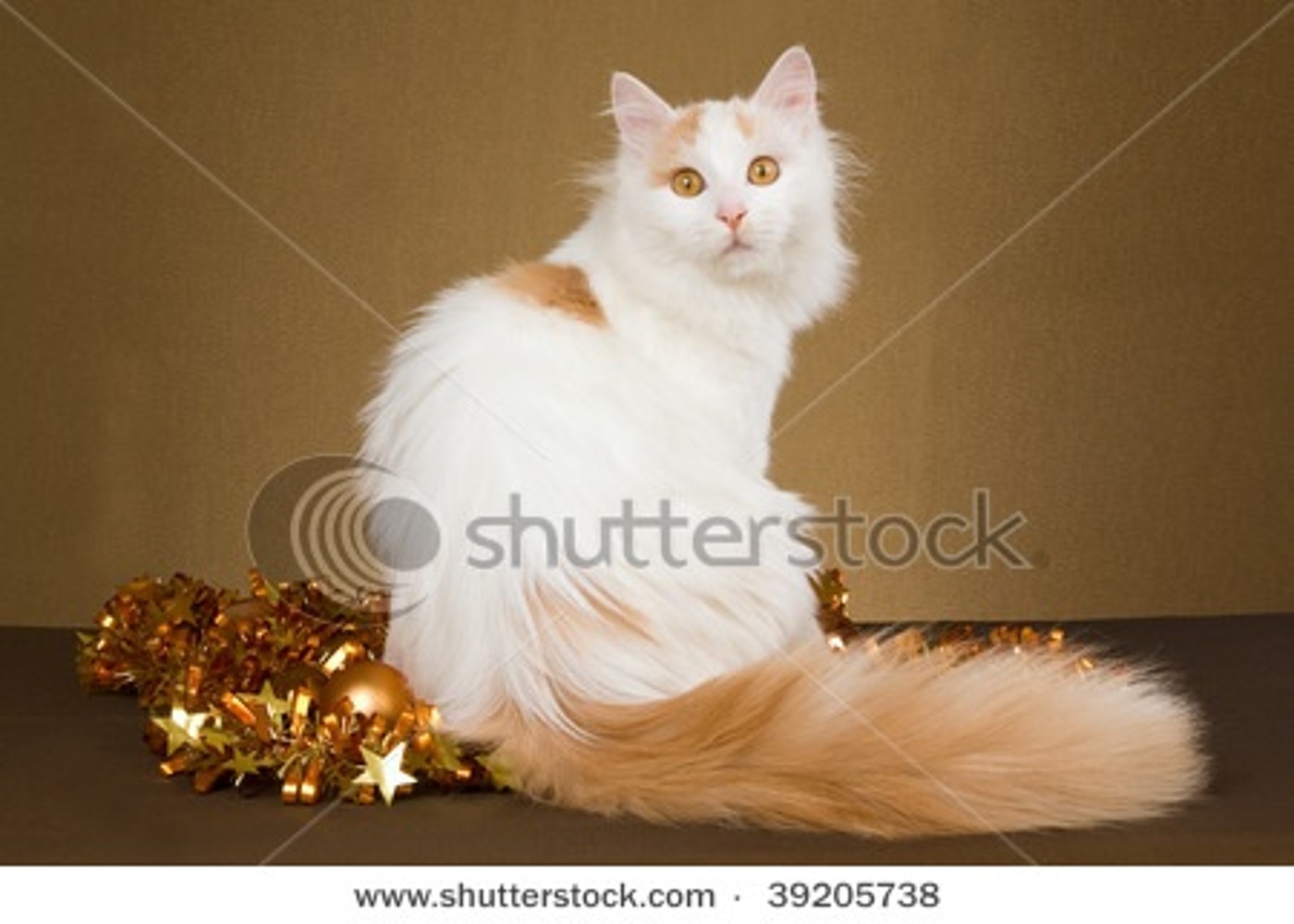
Turkish Van
* water loving cat and termed “Swimming Cats”
* coat lacks undercoat; unique cashmere-like texture that is water-resistant; lil grooming
* rare and ancient breed developed in central and southwest Asia
* takes 3 to 5 yrs to reach full maturity; large; agile cat of substantial strength
* very smart as well as curious and make rewarding companion in right home
* coat lacks undercoat; unique cashmere-like texture that is water-resistant; lil grooming
* rare and ancient breed developed in central and southwest Asia
* takes 3 to 5 yrs to reach full maturity; large; agile cat of substantial strength
* very smart as well as curious and make rewarding companion in right home
15
New cards
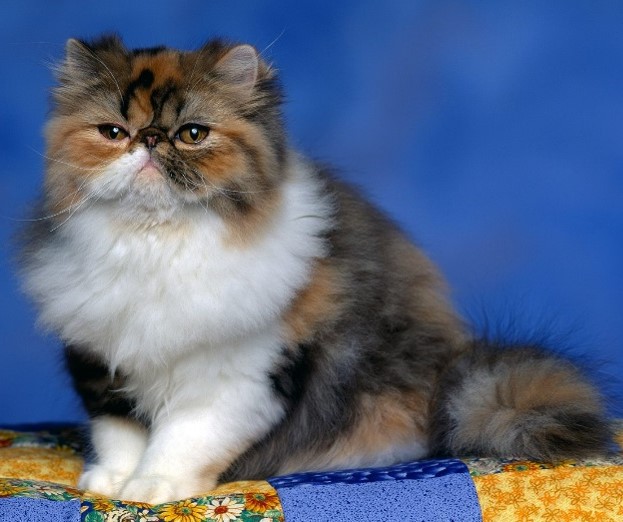
Persian
\-not #1 breed in US anymore Ragdoll overtook em but used to be
\-been in hieroglyphs from around 1684 B.C.
\-have brachycephalic/smooshed faces that cause same health issues in some dog breeds ex: pug
\-can adapt to change but prefer secure environments
\-do not like heights!!!!!!
\-shown in numerous colors that are divided into 7 categories for showing
\-not too loud or playful; can requires lot of time and work for proper grooming
\
\-been in hieroglyphs from around 1684 B.C.
\-have brachycephalic/smooshed faces that cause same health issues in some dog breeds ex: pug
\-can adapt to change but prefer secure environments
\-do not like heights!!!!!!
\-shown in numerous colors that are divided into 7 categories for showing
\-not too loud or playful; can requires lot of time and work for proper grooming
\
16
New cards
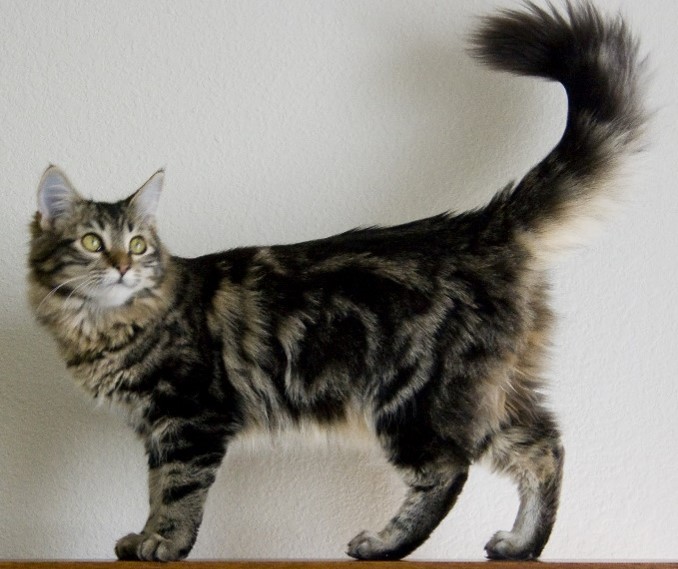
Maine Coon
\-native american long haired cat (found in maine)
\-famous for appearance and working ability
\-developed by “survival of fittest” for conditions
\-numerous folklores surround breed
\-intelligent, kind,very large for cat breed (avg 17+ lb) but gentle giant & good w other pets and children
\-want to be w owners all the time and like water
\
\-famous for appearance and working ability
\-developed by “survival of fittest” for conditions
\-numerous folklores surround breed
\-intelligent, kind,very large for cat breed (avg 17+ lb) but gentle giant & good w other pets and children
\-want to be w owners all the time and like water
\
17
New cards
ragdoll
most popular cat breed rn
18
New cards
\-the bengal (ALC cat)
\-the savannah (serval cat)
\-chausie (AJC)
\-safari (geofferey cat bengal or domestic)
\-cheetoh (bengal\*ocicat)
\-the savannah (serval cat)
\-chausie (AJC)
\-safari (geofferey cat bengal or domestic)
\-cheetoh (bengal\*ocicat)
up and coming new cat hybrids
19
New cards
Professor for Lecture for TA Payne
Dr.Campbell ;
20
New cards
Dr.Campbell’s fav animal
pangolin
21
New cards
part of lecture for Dr.Campbell
\-discusses meaning of words and they affect how we see an animal
ex: pet vs companion animal
pet means animals you own for pleasure
companion animal means we take responsibility for you or we keep with compassion not just for pleasure
\
the implications of this word can affect things such as the amount of money you get when suing for death of animal
\-James Serpell disusses how we feel about the animal ethically aka affect v utility
we did scales on affect v utility w bulldog puppy, service dog, bee
feral v community cats:
feral=wild, unwanted, aggressive
community= cared for and loved by community,welcome
\-get her positions in things and what classes she teaches
\
ex: pet vs companion animal
pet means animals you own for pleasure
companion animal means we take responsibility for you or we keep with compassion not just for pleasure
\
the implications of this word can affect things such as the amount of money you get when suing for death of animal
\-James Serpell disusses how we feel about the animal ethically aka affect v utility
we did scales on affect v utility w bulldog puppy, service dog, bee
feral v community cats:
feral=wild, unwanted, aggressive
community= cared for and loved by community,welcome
\-get her positions in things and what classes she teaches
\
22
New cards
\
\
\
avma
\
\
avma
American veterinarian medical association?
23
New cards
rabbits are ___most common mammalian US pet
3rd
24
New cards
Rabbit characteristics
\-overpopulation is becoming concern
\-more common as pets in US then ather countries
\-ARBA (american rabbit breeders association)
\-50 breeds in ARBA
\-distinct breeds available in 4 size classes (heavy, avg, lightweight, and small)
\-bred for meat (12 mil in USA alone used per yr), pets, wool, and lab and feeder animals
\-NOT RODENT
\-originated in Asia (45 mil. yrs ago)
\-common rabbits descended from Europe in Middle Ages (our pet rabbits are descendants of European ones not wild ones in US)
\-more ppl allergic to rabbits than cats
\-rabbits cannot vomit therefore hairballs can be prob so brush rabbit
\-can litter train only use certain litter types tho, can walk on leash/harness
over 85F can cause heat stroke
\-more common as pets in US then ather countries
\-ARBA (american rabbit breeders association)
\-50 breeds in ARBA
\-distinct breeds available in 4 size classes (heavy, avg, lightweight, and small)
\-bred for meat (12 mil in USA alone used per yr), pets, wool, and lab and feeder animals
\-NOT RODENT
\-originated in Asia (45 mil. yrs ago)
\-common rabbits descended from Europe in Middle Ages (our pet rabbits are descendants of European ones not wild ones in US)
\-more ppl allergic to rabbits than cats
\-rabbits cannot vomit therefore hairballs can be prob so brush rabbit
\-can litter train only use certain litter types tho, can walk on leash/harness
over 85F can cause heat stroke
25
New cards
Heavy (greater than 5Kg): French lop and Flemish giant
\-average (3,5-4.5 kg): new zealand white and grand chinchilla
\-lightweight ( 2.5 to 3 kg) : Himalayan and dutch
\-small (1kg): polish
\-average (3,5-4.5 kg): new zealand white and grand chinchilla
\-lightweight ( 2.5 to 3 kg) : Himalayan and dutch
\-small (1kg): polish
Rabbit Breed Examples
26
New cards
* can swim and not normal pet; cannot be bred w pet rabbits
Cottontail rabbit species
27
New cards
separate species from rabbit ;not a normal pet; cannot breed w pet rabbits
hare rabbit species
28
New cards
single pair brought to australia in 1859 and within 30 yrs there were over 20 mil; had to be eradicated but still a prob (invasive species,erosion)
origin of rabbits supposedly
29
New cards
\-takes 30 days for rabbit to become sexually mature
\-gestation period is 30 to 33 days
\-male called buck and female doe
\-female will attack younger of other does to include trying to castrate younger males
\-males will attack other juvenile males when they reach puberty
\-when breeding put doe in bucks cage ; permanently in heat
\
\-gestation period is 30 to 33 days
\-male called buck and female doe
\-female will attack younger of other does to include trying to castrate younger males
\-males will attack other juvenile males when they reach puberty
\-when breeding put doe in bucks cage ; permanently in heat
\
rabbit gestation
30
New cards
\-babies can eat solid food at 4 wks
\-rabbit is hindgut digester similar to horse (they need lots of fiber in diet!!)
\-practices coprophagy(eats own feces) (B-vit and vit K) directly from anus “night or soft feces”
\-vt C may be needed if stressed
\-nurse babies usually once in morning
\-mothers amke nest by using abdomen hair and have 6 to 12 young
\-primarily eat at night
\-need timothy hay
\-rabbit is hindgut digester similar to horse (they need lots of fiber in diet!!)
\-practices coprophagy(eats own feces) (B-vit and vit K) directly from anus “night or soft feces”
\-vt C may be needed if stressed
\-nurse babies usually once in morning
\-mothers amke nest by using abdomen hair and have 6 to 12 young
\-primarily eat at night
\-need timothy hay
rabbit food facts
31
New cards
\-stress can cause cardiac arrest and paralysis
\-need chews; teeth continuously grow
\-probs: ringworm, mites, absesses, necrobacillus, heartworms, sore hocks, and overgrown teeth (allergic to amox. and pen. derivatives)
\-LE 8 to 12 yrs
\-recommended rabbits get 30 hrs of play time outside cage a wk and natural sunlight
\-if not spayed uterine cancer is common prob
\-pasteurellosis is most common med prob (respiratory disease that can be passed on) & enteritis is common cause of death
\-need chews; teeth continuously grow
\-probs: ringworm, mites, absesses, necrobacillus, heartworms, sore hocks, and overgrown teeth (allergic to amox. and pen. derivatives)
\-LE 8 to 12 yrs
\-recommended rabbits get 30 hrs of play time outside cage a wk and natural sunlight
\-if not spayed uterine cancer is common prob
\-pasteurellosis is most common med prob (respiratory disease that can be passed on) & enteritis is common cause of death
rabbit health
32
New cards
\-6-8 species of it exist but only Cavia porcellus is bred as companion animal
\-many breeds exist but only 13 unique breeds are used as pets
\-newest breed is skinny pig
\-have been domesticated at least 3000 yrs
\-guinea pigs ARE considered rodents
\-originally from mtns (venezuela to chile SA)
\-bred for meat originally
\-many breeds exist but only 13 unique breeds are used as pets
\-newest breed is skinny pig
\-have been domesticated at least 3000 yrs
\-guinea pigs ARE considered rodents
\-originally from mtns (venezuela to chile SA)
\-bred for meat originally
guinea pig info
33
New cards
* female :sow male: boar
* born physically mature and cat eat adult food immediately
* need to be bred 7 mo or pelvic bones will fuse so C section is must; get fixed asap
* social aniamls need buddy and low stress
* born physically mature and cat eat adult food immediately
* need to be bred 7 mo or pelvic bones will fuse so C section is must; get fixed asap
* social aniamls need buddy and low stress
guinea pig gestation info
34
New cards
\-obesity common (eat when not hungry dont have gut fill)
\-herbivores w monogastric stomach and large cecum therefore hindgut digestor
\-need chews
\-require vit C or will get scurvy
\-practice coprophagy directly from anus therefore keep cage clean
\-over 85F can cause heat stroke
\-nocturnal
\-probs include: lice,mites, ringworm, alopecia, resp. disease, streptococcal pneumonia
\-herbivores w monogastric stomach and large cecum therefore hindgut digestor
\-need chews
\-require vit C or will get scurvy
\-practice coprophagy directly from anus therefore keep cage clean
\-over 85F can cause heat stroke
\-nocturnal
\-probs include: lice,mites, ringworm, alopecia, resp. disease, streptococcal pneumonia
guineapig food/health
35
New cards
* pet small in size
what is pocket pet
36
New cards
How many species of rats are there? How many do we keep as pets?
500; 2
37
New cards
How many species of mice? How many we keep as pet?
35;1
38
New cards
mice and rats should not be
housed alone; social animals
39
New cards
mice and rats scientific names?
mus musculus (mice)
; rattus norvegivus & rattus rattus (rat)
; rattus norvegivus & rattus rattus (rat)
40
New cards
proper care for rats and mice
\-larger space is better
\-can chew wood and some plastics
\-house indoors
\-poor husbandry is common cause of ill health (research pet’s needs)
\-water should be always be available
\-commercial diets
\-bedding: corn cob, wood, tissue
\-clean cage 2/3 times per wk
\-Le is 2 to 3 years
\-can chew wood and some plastics
\-house indoors
\-poor husbandry is common cause of ill health (research pet’s needs)
\-water should be always be available
\-commercial diets
\-bedding: corn cob, wood, tissue
\-clean cage 2/3 times per wk
\-Le is 2 to 3 years
41
New cards
characteristics of rats/mice
\-rats very smart, fun to watch, very clean
\-resp. probs and tumors common w rats
\-prone to obesity and live longer if thin
\-very delicate (kids can hurt them)
\-resp. probs and tumors common w rats
\-prone to obesity and live longer if thin
\-very delicate (kids can hurt them)
42
New cards
gestation of rats/mice
\-19-24 d & females in heat every 4 days; separate males and females immediately if you don’t want babies
\
\
43
New cards
proper handling of mice/rats
\-mice : pick up by base of tail (not tip) then scruff for balance (use cup to catch then and teach em to climb in hand)
\-rat: pick up behind shoulders if tame
\
\-rat: pick up behind shoulders if tame
\
44
New cards
ferret uses/characteristics
\-in past:
-ferreting-rabbit hunting using ferrets; ferret racing 12-16m of plastic pipe w 2-3 windows; ferret legging (literally put ferrets in pants); rumored to be used to run cables thru airplanes & skyscraper (ferrets love tunnels)
\
\-currently:
-domestic pets; shows; fur ranching
\
\-can mate (get from notes)
\-LE 5-11 yrs
\-distemper virus 100% fatal in ferret
\
-ferreting-rabbit hunting using ferrets; ferret racing 12-16m of plastic pipe w 2-3 windows; ferret legging (literally put ferrets in pants); rumored to be used to run cables thru airplanes & skyscraper (ferrets love tunnels)
\
\-currently:
-domestic pets; shows; fur ranching
\
\-can mate (get from notes)
\-LE 5-11 yrs
\-distemper virus 100% fatal in ferret
\
45
New cards
ferret behavior
\-reputation as unpredictable, but usually quite tame (males will fight)
\-can be trained to use litter boxes ( not 100%)
\-can tolerate dogs & cats if dogs/cats will tolerate them
\-not legal in D.C. , Hawaii, or Cali, etc b/c of worries of a possible feral population of them they are more carnivorous than cats
\-the domestic ferret ( mustela pulorius furo) in not same species as endangered wild US ferret ; they CANNOT mate
\-can be trained to use litter boxes ( not 100%)
\-can tolerate dogs & cats if dogs/cats will tolerate them
\-not legal in D.C. , Hawaii, or Cali, etc b/c of worries of a possible feral population of them they are more carnivorous than cats
\-the domestic ferret ( mustela pulorius furo) in not same species as endangered wild US ferret ; they CANNOT mate
46
New cards
ferret nutrition
\-true carnivore
\-feed ferret food but if emergency can feed cat food
\-gaining weight in winter normal
\-high levels of zinc is toxic to them (can be transferred from some feeding dishes and cages)
\-feed ferret food but if emergency can feed cat food
\-gaining weight in winter normal
\-high levels of zinc is toxic to them (can be transferred from some feeding dishes and cages)
47
New cards
gestation in ferrets
\-males called hobs- in season jan to aug
\-females called jills - seasonally in heat last week of march to sep; gestation 38-44d
\-litter consists of 5-13 kits
\-due to condition aplastic anemia..females ferrets that are not going to bred yearly should be neutered!
\-females called jills - seasonally in heat last week of march to sep; gestation 38-44d
\-litter consists of 5-13 kits
\-due to condition aplastic anemia..females ferrets that are not going to bred yearly should be neutered!
48
New cards
Gerbils characteristics
\-LE 3-5 yr
\-mongolian gerbil most common
\-primarily nocturnal, fairly quiet & monogamous, rarely bite and tame easier
\-avoid metal cages (burrowing)
\-conserve water well and urinate lil
\-reproduce quickly, young born helpless (dads help w babies)
\-long rat like tails
\-can live comfortably in hamster cages altho need more toys bc more active
\-pretty robust and fewer diseases than many rodents
\-mongolian gerbil most common
\-primarily nocturnal, fairly quiet & monogamous, rarely bite and tame easier
\-avoid metal cages (burrowing)
\-conserve water well and urinate lil
\-reproduce quickly, young born helpless (dads help w babies)
\-long rat like tails
\-can live comfortably in hamster cages altho need more toys bc more active
\-pretty robust and fewer diseases than many rodents
49
New cards
gerbil diet
\-commercial diet is fine just chose one w/o large amounts of veg. and sunflower seeds bc bad
\
\
50
New cards
gerbil gestation
\-24-26 days (can have delayed implantation)
* litter size: 4-6
* litter size: 4-6
51
New cards
hamster charcterisitcs
\-golden hamster is more frequent pet and Chinese hamster is 2nd (come in many colors and varieties)
\-hibernate in temps below 5 degrees
\-will bite ; handle w care and do not scare em
\-most common disease is wet tail and is very serious if not vet treated asap
\-females are aggressive and dominate males
\-LE 1-3 yrs
\-short stubby tails
\-nocturnal
\-catch colds easily (do not keep in drafty places)
\
\
\-hibernate in temps below 5 degrees
\-will bite ; handle w care and do not scare em
\-most common disease is wet tail and is very serious if not vet treated asap
\-females are aggressive and dominate males
\-LE 1-3 yrs
\-short stubby tails
\-nocturnal
\-catch colds easily (do not keep in drafty places)
\
\
52
New cards
hamster gestation
\-16 days and females cycle every 4 days
\-after mating remove female from males cage she may fight w him to death
\-after mating remove female from males cage she may fight w him to death
53
New cards
hedgehog characteristics
\-insectivore mammals (snails, spiders, small eggs, bird)
\-mammals closely related to them are moles, voles, and shrews
\-very primitive animals; not smart can’t rlly learn tricks
\-european and african (smaller in size) hedgehogs are most common as pets
\-**there are some limitations as pets… for example, the European hedgehog can only be kept as a pet in Africa since it is protected in Europe & it is illegal to import the African hedgehog into many countries because it too is protected**
\-got popular in 1980s
\-weigh between 250-600 g (454,6g =1 lb)
\-nocturnal and fed to foaging behavior otherwise can be obese
\-commercial diets and meals as treat
\-external parasites such as flea, ticks, and mites (mites can get rlly bad and very common)
\-get lungworms (snail/slug vector) is life threatening to them
\-constipation is common prob and can be serious in young ones
\-borrowing animals and needs somewhere to hide in cages
\-beware of spines when upset they hiss and use them as defense
\
\
\-mammals closely related to them are moles, voles, and shrews
\-very primitive animals; not smart can’t rlly learn tricks
\-european and african (smaller in size) hedgehogs are most common as pets
\-**there are some limitations as pets… for example, the European hedgehog can only be kept as a pet in Africa since it is protected in Europe & it is illegal to import the African hedgehog into many countries because it too is protected**
\-got popular in 1980s
\-weigh between 250-600 g (454,6g =1 lb)
\-nocturnal and fed to foaging behavior otherwise can be obese
\-commercial diets and meals as treat
\-external parasites such as flea, ticks, and mites (mites can get rlly bad and very common)
\-get lungworms (snail/slug vector) is life threatening to them
\-constipation is common prob and can be serious in young ones
\-borrowing animals and needs somewhere to hide in cages
\-beware of spines when upset they hiss and use them as defense
\
\
54
New cards
Hedgehog behavior
\-practice anointing behvior (use their own saliva as type of body lotion)
\-cages need to be smooth and high to prevent escape and should NOT be made of wire bc they can get stuck
\-cages eed to be warm
\-LE can up to 10 yrs
\-if dirty you can wash under fucet but don’t do it unless desperatly needed
\-cages need to be smooth and high to prevent escape and should NOT be made of wire bc they can get stuck
\-cages eed to be warm
\-LE can up to 10 yrs
\-if dirty you can wash under fucet but don’t do it unless desperatly needed
55
New cards
Prairie Dog characteristics
\-weigh .5-2.2 kg
\-housing needs are similar to rabbit except they need LOTS of substrate for digging and PVC pipe to hide and play in
* VERY social ; do not house alone they do NOT do well alone
\-diurnal animals aka active during day
\-should always have grass hay and if commerical diet not available rabbit type chow is OK
\-scientific name is Cynomys Iudovicianus)
\
\-housing needs are similar to rabbit except they need LOTS of substrate for digging and PVC pipe to hide and play in
* VERY social ; do not house alone they do NOT do well alone
\-diurnal animals aka active during day
\-should always have grass hay and if commerical diet not available rabbit type chow is OK
\-scientific name is Cynomys Iudovicianus)
\
56
New cards
Prarie Dog health issues/info
\-obesity, dental disease ,respiratory disease (usually due to poor husbandry)
\-new chews
\-should get fixed when young
\-gestation last around a month
\-(generally wild caught) can carry plague and monkey pox
\-new chews
\-should get fixed when young
\-gestation last around a month
\-(generally wild caught) can carry plague and monkey pox
57
New cards
Sugar Glider charcateristics
* scientific name Petaurus breviceps
* lots of subspecies
* LE 12-14 yrs
* can glide up to 50m (150ft) and tails are not prehensile ; have opposable fingers and toes
* high social and should not be kept as single pet can get depressed and self mutilate
\
* lots of subspecies
* LE 12-14 yrs
* can glide up to 50m (150ft) and tails are not prehensile ; have opposable fingers and toes
* high social and should not be kept as single pet can get depressed and self mutilate
\
58
New cards
sugar glider sexual characteristics
\-gestation 17d
\-will scent mark epecially males ; neutering will help slow but wont stop
\
\
\-will scent mark epecially males ; neutering will help slow but wont stop
\
\
59
New cards
sugar glider health issues/husbandry
\-bird cages NOT suitable, need supplemental heating, cage should be 6 by 6 by 6 ft w lots of items to play w and jump on
\-diet is difficult..commercial ones are best choice but needs work still
\-common health issues: nutritional stress, cataracts, skin prob, and many more
\-diet is difficult..commercial ones are best choice but needs work still
\-common health issues: nutritional stress, cataracts, skin prob, and many more
60
New cards
Degu characteristics
* name Octodon degus
* from Chile, often called “brush tail rat”
* used for diabetes and cataract research
* VERy social and communication is important
* born mature
* good vision w special sensitivity to UV light
* LE: 15 yrs in wild; 10-13 in captivity (5 more realistic)
* \
* from Chile, often called “brush tail rat”
* used for diabetes and cataract research
* VERy social and communication is important
* born mature
* good vision w special sensitivity to UV light
* LE: 15 yrs in wild; 10-13 in captivity (5 more realistic)
* \
61
New cards
gestation for degu
90 days
62
New cards
Degu behavior
\-dtermine social hierarchy by size of stick pile
\-live in burrows
\-herbivores who also practice coprophagy
\-love to dig,bury, chew
\-in captivity can eat chinchilla or guine pig pellets w grasses,hay, occasional veggies
\-NO food high in sugar and NO caffeine
\-live in burrows
\-herbivores who also practice coprophagy
\-love to dig,bury, chew
\-in captivity can eat chinchilla or guine pig pellets w grasses,hay, occasional veggies
\-NO food high in sugar and NO caffeine
63
New cards
domesticated
exotic pets are NOT
64
New cards
Chinchilla characteristics
\-south american rodent (most common in andes mnt range)
\-used for over 1000 yrs for fur ( almost lead to extinction)
\-nocturnal ,best handled at night by calm quiet person
\-quiet and clean animals (some consider almost odor free)
\-usually very healthy if fed correctly and kept “stress free”
\
\-used for over 1000 yrs for fur ( almost lead to extinction)
\-nocturnal ,best handled at night by calm quiet person
\-quiet and clean animals (some consider almost odor free)
\-usually very healthy if fed correctly and kept “stress free”
\
65
New cards
Chinchilla husbandry
\-temp cannot exceed 80 degrees F they can die from heat exhaustion
\-not social 1 per cage
\-need chew toys, and places to hide ; get cages “teeth” proof and escape proof for possible babies
\-need dust baths
\-commericial food best guine pig food 2nd
\
\-not social 1 per cage
\-need chew toys, and places to hide ; get cages “teeth” proof and escape proof for possible babies
\-need dust baths
\-commericial food best guine pig food 2nd
\
66
New cards
chinchilla gestation
\-111 days long is gestation and 2 babies per litter
67
New cards
Coatimundi
\-do search and rescue
\-Dr.A bit by one
\-used to be in NC
\-Dr.A bit by one
\-used to be in NC
68
New cards
Why do we want fish as companion animals
\-reduce stress
\-less demanding
\-beautiful and unique
\-
\-less demanding
\-beautiful and unique
\-
69
New cards
\-select fish type (research it!)
\-select tank or pond size ;type of tank; high or long
(20 gallon is good start for new fish owners)
\-increasing surface area of tank increases tank fish capacity
\-select tank or pond size ;type of tank; high or long
(20 gallon is good start for new fish owners)
\-increasing surface area of tank increases tank fish capacity
What to do if you want fish?
70
New cards
\-mechanical (ones sold in store) - needed to filter particles out of water
\-chemical- may be used to change water chemistry if trying to keep sensitive species; changing pH or hardness of water
\-biological- of #1 importance in tank , reason you have filer -bacteria live in filer to make fish waste less harmful (usually in filter cartidge)
\-chemical- may be used to change water chemistry if trying to keep sensitive species; changing pH or hardness of water
\-biological- of #1 importance in tank , reason you have filer -bacteria live in filer to make fish waste less harmful (usually in filter cartidge)
types of filters in fish tank
71
New cards
\-ammonia is produced by fish waste (toxic to fish)
\
\-2 diff kinds of bacteria convert ammonia waste first to nitrite and nitrate
-nitrate less harmful to fish ; can be removed by plants or water changes
\
\-2 diff kinds of bacteria convert ammonia waste first to nitrite and nitrate
-nitrate less harmful to fish ; can be removed by plants or water changes
Nitrogen cycle
72
New cards
\-fluorescent is best bc no heat emitted; fish do not need light all the time it can cause algae growth give night/day cycle
lighting for fish
73
New cards
\-diff types of fish food available: frozen, live, freeze-dried, flakes
\-pick type based on type of fish u own (there are bottom feeders, ones who only eating floating pellets, etc
\-pick type based on type of fish u own (there are bottom feeders, ones who only eating floating pellets, etc
food for fish
74
New cards
\-average for tropical fish is 76 to 82 F
\-avg for goldfish and koi is below 76F ..handle cold temps well
\-marine aquarium aka saltwater fish avg is 72 to 78 F
\-avg for goldfish and koi is below 76F ..handle cold temps well
\-marine aquarium aka saltwater fish avg is 72 to 78 F
heating for fish
75
New cards
\-pH scale from 6.0 to 9.0
\-most tropical fish needs to be 7; saltwater fish usually need 8.6; each fish can vary in optimum pH
\
\-water changes are important ; small ones weekly are better than big ones monthly
\-most tropical fish needs to be 7; saltwater fish usually need 8.6; each fish can vary in optimum pH
\
\-water changes are important ; small ones weekly are better than big ones monthly
water quality
76
New cards
\-expensive not necessary
\-places to hide for shy, young,old, or prego fish
\-beware of treat items that may contaminate ur tank
\-each type of fish needs diff things in tanks; some need more plants than hides and vice versa
\-don’t use metallic gravel causes reflection which stresses fish
\-places to hide for shy, young,old, or prego fish
\-beware of treat items that may contaminate ur tank
\-each type of fish needs diff things in tanks; some need more plants than hides and vice versa
\-don’t use metallic gravel causes reflection which stresses fish
decorations for tank
\
\
77
New cards
\-beware of diseases spreading from new fish and affecting whole tank
when adding new fish to tank
78
New cards
\-salt levels: requires 1/2 cup of salt per gallon of tap water
\-cycling the tank can take 6 to 8 weeks before tank is “cycled” then fish can be added
\-cycling the tank can take 6 to 8 weeks before tank is “cycled” then fish can be added
Marine Salt Water Tank requirements
79
New cards
\-harder to care for so u see more death
\-very few salt water fish are bred in captivity most are wild caught
-most common way to catch saltwater fish is to dynamite near reefs or use cyanide (not allowed in US but can buy from countries that do this)
\-very few salt water fish are bred in captivity most are wild caught
-most common way to catch saltwater fish is to dynamite near reefs or use cyanide (not allowed in US but can buy from countries that do this)
saltwater fish tank controversy
80
New cards
\-hundreds of afflictions that can affect health of fish: bacteria, protozoa, fungus, viral, parasitic
Sick Fish
81
New cards
\-buy only good quality, compatible fish ;look for clear eyes and gills
\-quarantine new fish before adding
\-avoid stress, “bully” fish tank mates, sudden changings in conditions
\-remove sick fish to “hospital tank” for treatment and make sure fish are healthy b4 moving them bk
\-disinfect nets used to move sick fish
\-dont transfer water from sick tank to main
\-quarantine new fish before adding
\-avoid stress, “bully” fish tank mates, sudden changings in conditions
\-remove sick fish to “hospital tank” for treatment and make sure fish are healthy b4 moving them bk
\-disinfect nets used to move sick fish
\-dont transfer water from sick tank to main
how to prevent sick fish
82
New cards
\-can be egglayers and livebearers
\-breeding process is called spawning and requires lots of work
\-single female can lay up to 1000 eggs
\-depending on species mal/female will take care of eggs/babies
\-you should move eggs/fry (babies) into separate tank common for them to be eaten
\-breeding process is called spawning and requires lots of work
\-single female can lay up to 1000 eggs
\-depending on species mal/female will take care of eggs/babies
\-you should move eggs/fry (babies) into separate tank common for them to be eaten
fish reproductive
\
\
83
New cards
1000+ years
how long is it estimated that goldfish have been domesticated
84
New cards
\-raised in captivity
captive bred
85
New cards
egg possibly taken out of wild
captive hatched
86
New cards
caught in wild
wild caught
87
New cards
\-USA largest consumer of live reptiles for pets (others beat US for food)
\-in 2002 , 2 million reptile and 49 million were imported
\-annual incomes from reptiles and reptile related products is 2 billion
\-in 2002 , 2 million reptile and 49 million were imported
\-annual incomes from reptiles and reptile related products is 2 billion
reptile facts
88
New cards
\-relates to reptiles and amphibians
\-at least 3% US homes
\-14 million reps and 14 milli amphibians in US homes
\-have Jacobson’s organ (flehmen reaction) much like cat
\-all need H2O; some w spray bottles, humidifiers, or water dishes
\-”cold-blooded animals” aka ectothermic (cannot generate internal heat it needs outside heat)
\-have not been pets long and many probs exist for healthy management
\-salmonella is issue with reptiles/amphibians but also w cats/dogs
\-can live VERY long time
\-at least 3% US homes
\-14 million reps and 14 milli amphibians in US homes
\-have Jacobson’s organ (flehmen reaction) much like cat
\-all need H2O; some w spray bottles, humidifiers, or water dishes
\-”cold-blooded animals” aka ectothermic (cannot generate internal heat it needs outside heat)
\-have not been pets long and many probs exist for healthy management
\-salmonella is issue with reptiles/amphibians but also w cats/dogs
\-can live VERY long time
“Herptiles”
89
New cards
\-around 7,000 species of them overall (kept as pets or in zoos)
\-ex: African clawed toad, Surinam toad, fire-bellied toads, poison arrow frogs (not poisonous as pets bc it usually is the natural diet that makes it poison) , tree frogs, axolotl (pink/white captive and black in wild), & tiger salamander
\-many endangered species are amphibians b/c of how they absorb the environment thru their skin (called amphibian skin)therefore pollution is very bad or have lotion on hands when handling can be bad
\-first thought to have evolved from primitive fish 350 milli yrs ago
\-water conditions is very important just like w fish
\-most species need vivarium (land and water in cages)
\-hides and environmental conditions aka humidty and temp is important
\-diet varies w life stage (most carnivorous as adults but can eat veggies as babies)
\-breeding can be difficult (some specifics in temp, water, seasonality,etc)
\-ex: African clawed toad, Surinam toad, fire-bellied toads, poison arrow frogs (not poisonous as pets bc it usually is the natural diet that makes it poison) , tree frogs, axolotl (pink/white captive and black in wild), & tiger salamander
\-many endangered species are amphibians b/c of how they absorb the environment thru their skin (called amphibian skin)therefore pollution is very bad or have lotion on hands when handling can be bad
\-first thought to have evolved from primitive fish 350 milli yrs ago
\-water conditions is very important just like w fish
\-most species need vivarium (land and water in cages)
\-hides and environmental conditions aka humidty and temp is important
\-diet varies w life stage (most carnivorous as adults but can eat veggies as babies)
\-breeding can be difficult (some specifics in temp, water, seasonality,etc)
Classification of Amphibians
90
New cards
\-Anura (tailess adults ex frogs/toads)
\-Caudata (adults w tails ex: newts/salamanders)
\-Apoda (tropical and legless)
\-Caudata (adults w tails ex: newts/salamanders)
\-Apoda (tropical and legless)
Main classes of amphibians
91
New cards
\-roughly 10,000 species of em
\-Order Cheloian (shelled reptile) 341 species ; terrapin: fresh water, tortoise: land, turtle: marine)
\-Order Squamata (lizards ad snakes)
\*lizards 6000 species, snakes 3500 species, worm lizards 188 species
\-Order Crocodylia (alligators and crocodiles) 25 speckies
\-Order Rhynchocephalia (Tuatara) 1 species some say 2
\
\-Order Cheloian (shelled reptile) 341 species ; terrapin: fresh water, tortoise: land, turtle: marine)
\-Order Squamata (lizards ad snakes)
\*lizards 6000 species, snakes 3500 species, worm lizards 188 species
\-Order Crocodylia (alligators and crocodiles) 25 speckies
\-Order Rhynchocephalia (Tuatara) 1 species some say 2
\
Reptile Classifications
92
New cards
.-shelled reptiles (turtles and tortoises)
\-diets vary research ur species some carnivores, herbivores , or omnivores
\-they hibernate (normal behavior when temps decrease and day length shortens) will not eat during this time
\-need H2O especially after hibernation
\-can be hard/dangerous to hold (for both man and animal) bc it can bite and we could drop it
\-sexing: males have longer tails and perhaps longer nails/claws…shell differences too
\-common probs: cataracts,bindness, eggbinding, nutrition probs, obesity, anorexia, etc
\-Need lots of calcium as well as other egg laying animals
\-should be house indoors if pet & DO NOT TAKE from wild
\-diets vary research ur species some carnivores, herbivores , or omnivores
\-they hibernate (normal behavior when temps decrease and day length shortens) will not eat during this time
\-need H2O especially after hibernation
\-can be hard/dangerous to hold (for both man and animal) bc it can bite and we could drop it
\-sexing: males have longer tails and perhaps longer nails/claws…shell differences too
\-common probs: cataracts,bindness, eggbinding, nutrition probs, obesity, anorexia, etc
\-Need lots of calcium as well as other egg laying animals
\-should be house indoors if pet & DO NOT TAKE from wild
Chelonian Order
93
New cards
\-Dr. Gregory A Lewbart (pre-vet advisor)
\-was wrestler which helped him w discipline
\-went to gettysburg college
\-butterfly koi ate rock ? weigh, examine (could see swelling), dont’ handle too much bc of sentive skin and mucus layer keep in bag if possible, gave fish anthesia kinda and took rock out
\-betta fish w white abcess who did 100% flare; flared fin/gils out in defense
\-puff w dogface pufferfish
\*u see lots of ocular aka eyes probs in fish
\*did CT scan to see severity of cancer /disease; did anesthia w MS-222 puffer was puffed up w h2o ; surgery last 30 min; decompress puff by siphoning water out ; trimmed teeth w nail clippers bc teeth always grow and in wild they ear coral but not in captivity
\-past 20 yrs big strides in fish med and surgery
\-probs w kedney or liver can cause water to accumlate in body causing health issues
\-probs w fish as pets = OTC medication not great and frustrates clinician; financial constraints of owner so cannot afford vet; knowledge base of fish is poor
\-koi has been catalyst for advancing captive fish med and surgery
\-pattern , size, health, color, way fish swims affects ways it is judged which can affect value if fish wins show it can be a million dollars
\-you can train fish to tricks w r2 fishschool kit
\-NC State vet fees
in house (for fish)
\*105 for visit and exam
\*64 for water test
\*75 for gill/skin biopsies
\*160 for radiographs
\*160 for CBC and chem screen
\*200 to 250 for ultrasound
\*500 for CT scan
\-Case history helps to diagnose prob
*how long has client owned fish?*etc
\-necessary supplies
\*water test kit
\*anesthetic agents only MS-222 is approved w food fish
\*”FADS” fish anesthesia delivery system
\-general clinical signs physical differences; weakness; gasping at surface; popout eyes
\*
\
\
\
\-was wrestler which helped him w discipline
\-went to gettysburg college
\-butterfly koi ate rock ? weigh, examine (could see swelling), dont’ handle too much bc of sentive skin and mucus layer keep in bag if possible, gave fish anthesia kinda and took rock out
\-betta fish w white abcess who did 100% flare; flared fin/gils out in defense
\-puff w dogface pufferfish
\*u see lots of ocular aka eyes probs in fish
\*did CT scan to see severity of cancer /disease; did anesthia w MS-222 puffer was puffed up w h2o ; surgery last 30 min; decompress puff by siphoning water out ; trimmed teeth w nail clippers bc teeth always grow and in wild they ear coral but not in captivity
\-past 20 yrs big strides in fish med and surgery
\-probs w kedney or liver can cause water to accumlate in body causing health issues
\-probs w fish as pets = OTC medication not great and frustrates clinician; financial constraints of owner so cannot afford vet; knowledge base of fish is poor
\-koi has been catalyst for advancing captive fish med and surgery
\-pattern , size, health, color, way fish swims affects ways it is judged which can affect value if fish wins show it can be a million dollars
\-you can train fish to tricks w r2 fishschool kit
\-NC State vet fees
in house (for fish)
\*105 for visit and exam
\*64 for water test
\*75 for gill/skin biopsies
\*160 for radiographs
\*160 for CBC and chem screen
\*200 to 250 for ultrasound
\*500 for CT scan
\-Case history helps to diagnose prob
*how long has client owned fish?*etc
\-necessary supplies
\*water test kit
\*anesthetic agents only MS-222 is approved w food fish
\*”FADS” fish anesthesia delivery system
\-general clinical signs physical differences; weakness; gasping at surface; popout eyes
\*
\
\
\
Veterinary MEd for Pet Fish :guest speaker 3/1
94
New cards
\-handling can be difficult (eeth, tails, & feet are dangerous)
\-housing is similar to snakes
\-various diseases are prevalent & modern med is improving in this area
\-large diet variety includes: herbivores, insectivores, carnivores, frugivores, & omnivores
\-diet supplementation is almost always required ex: bearded dragons NEED calcium or MBD will happen (over supplementing can be issues too!)
\-some have clumps of pigment in the dermis of the skin that disperse or congregate to change color (can be intentional or illness)
\-some practice autotomy (when lizards drop tail when frightened)
\-reptiles need UV light rays helps w vit D synthesis and pigment formation (does nto go thru glass!)
\-
\
\-housing is similar to snakes
\-various diseases are prevalent & modern med is improving in this area
\-large diet variety includes: herbivores, insectivores, carnivores, frugivores, & omnivores
\-diet supplementation is almost always required ex: bearded dragons NEED calcium or MBD will happen (over supplementing can be issues too!)
\-some have clumps of pigment in the dermis of the skin that disperse or congregate to change color (can be intentional or illness)
\-some practice autotomy (when lizards drop tail when frightened)
\-reptiles need UV light rays helps w vit D synthesis and pigment formation (does nto go thru glass!)
\-
\
Lizards
95
New cards
\-carnivores
\-can become obese and should be highly monitored
\-dead prey (if not warm , moving, or have heartbeat snake may not eat it) v live prey (mouse or whatever could fight bk)
\-can’t hear but do feel vibrations
\-handling can be interesting venomous v large etc
\-housing research ur snake needs can change based on type fo snake (arboreal, terrestrial, burrowing, aquatic, & temps)
\-poor husbandry, malnutrition, & lack of sanitation are biggest pet reptile killers
\
\-can become obese and should be highly monitored
\-dead prey (if not warm , moving, or have heartbeat snake may not eat it) v live prey (mouse or whatever could fight bk)
\-can’t hear but do feel vibrations
\-handling can be interesting venomous v large etc
\-housing research ur snake needs can change based on type fo snake (arboreal, terrestrial, burrowing, aquatic, & temps)
\-poor husbandry, malnutrition, & lack of sanitation are biggest pet reptile killers
\
Snakes
96
New cards
\-good beginner snake
\-only house 1 ( known 4 eating other snakes)
\-docile
\-mod size (3 to 6 ft)
\-lay eggs
\-temp 72 to 86 F
\-can live over 20 yrs- research type of king snake
\-only house 1 ( known 4 eating other snakes)
\-docile
\-mod size (3 to 6 ft)
\-lay eggs
\-temp 72 to 86 F
\-can live over 20 yrs- research type of king snake
king snake
97
New cards
\-good beginner snake
\-mod size (4 to 5 ft)
\-docile
\-egg layer- live up to 20 yrs
\-many colors and patterns and prices vary
\-mod size (4 to 5 ft)
\-docile
\-egg layer- live up to 20 yrs
\-many colors and patterns and prices vary
corn snake
98
New cards
\-excellent beginner snakes (20+ yr lifespan)
\-docile
\-mod size (4 t 6 ft)
females bigger than males
\-egg layers
\-defense mech is to normally roll up in ball not strike
\
\-docile
\-mod size (4 t 6 ft)
females bigger than males
\-egg layers
\-defense mech is to normally roll up in ball not strike
\
ball pythons
99
New cards
\-not beginner
\-can be 7 to 10 ft long
\-live birth
\-20+ yr LE
\-may strike when scared
\-can be 7 to 10 ft long
\-live birth
\-20+ yr LE
\-may strike when scared
red tail boa constrictors
100
New cards
egg layers
Burmese pythons